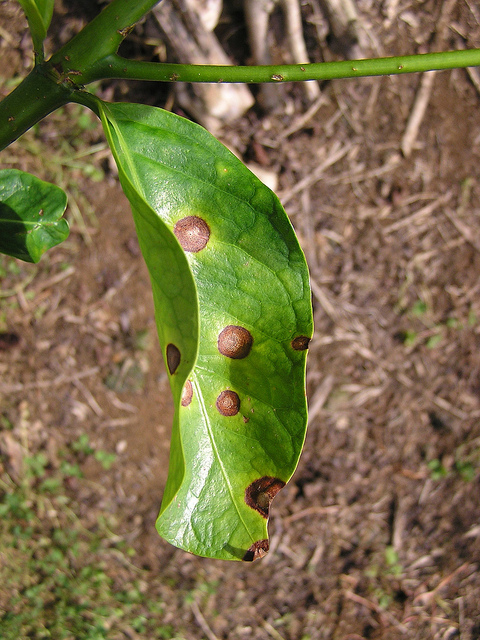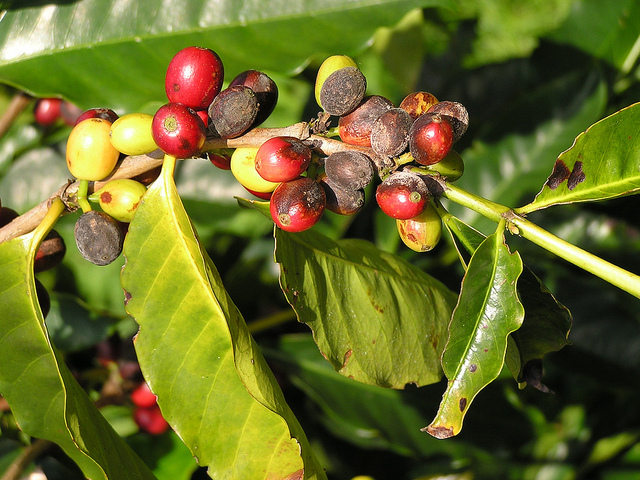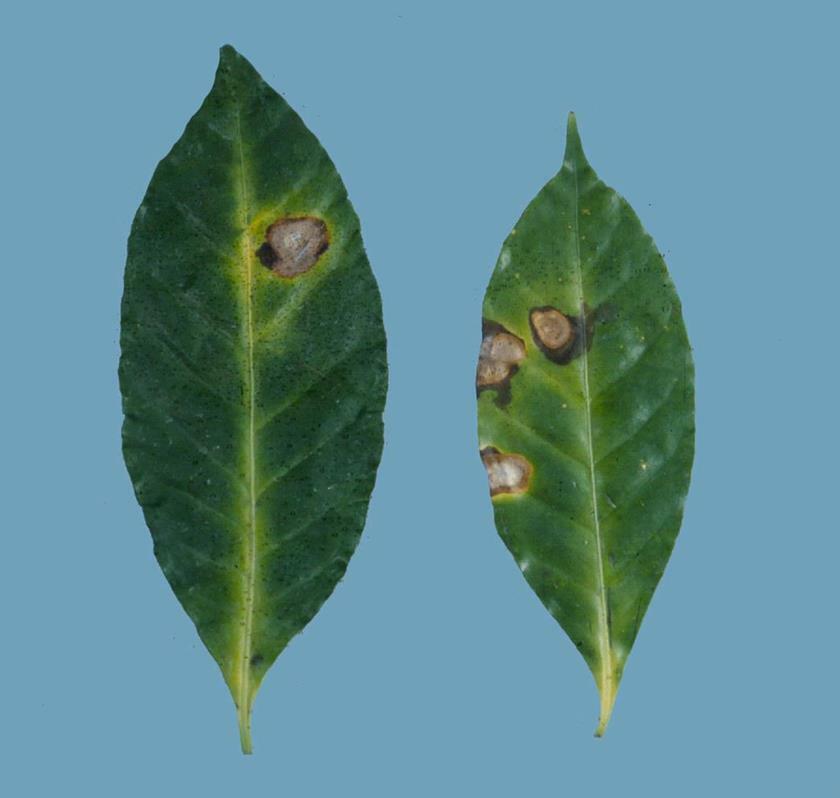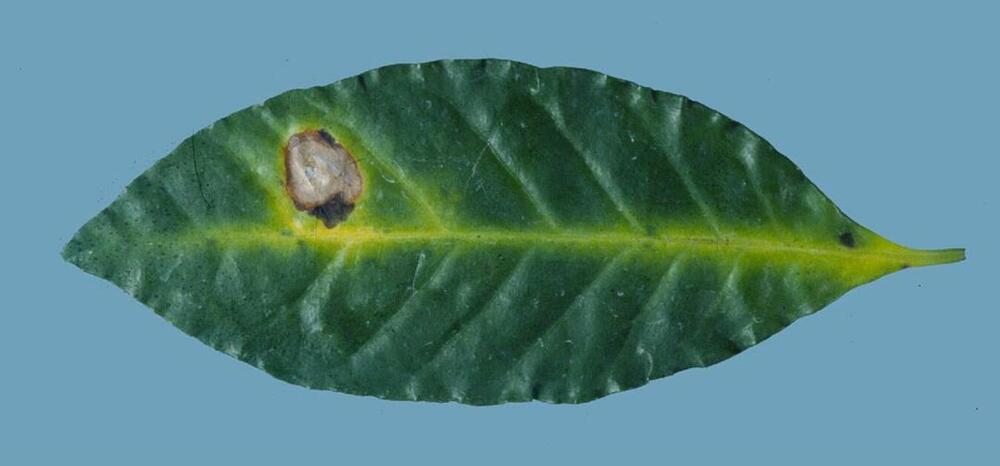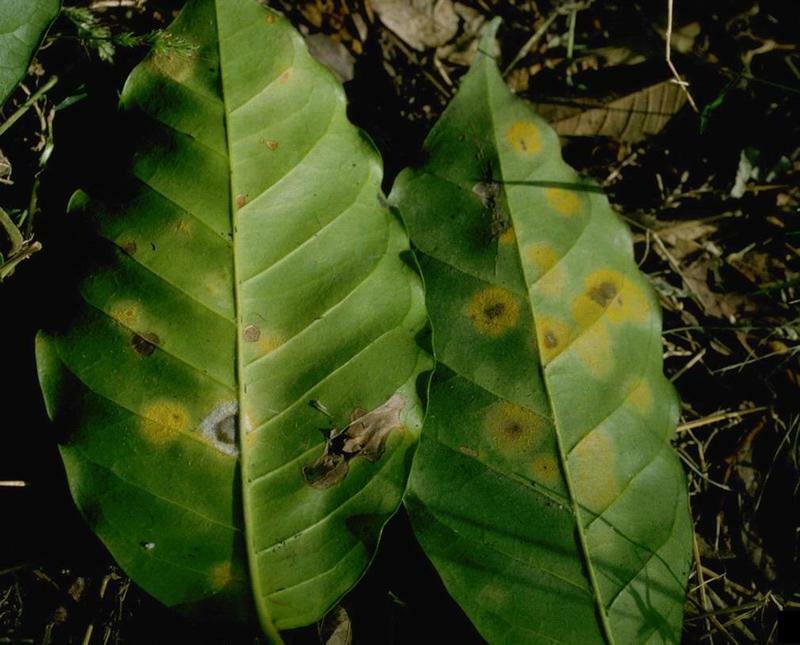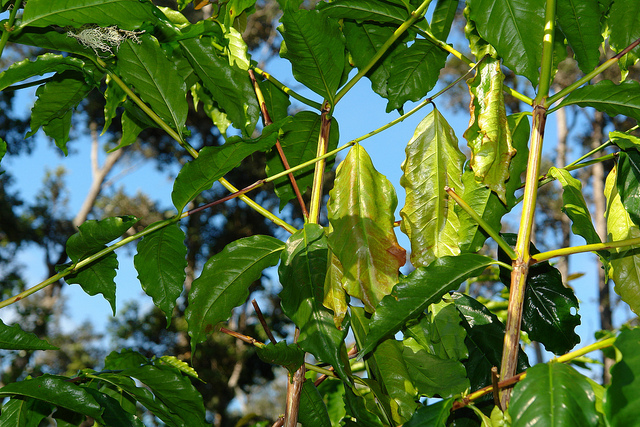Coffee
Description
Crop details
Scientific name: Coffea
Family: Coffea
Genus: Coffea
Local names: Kahawa (Swahili)
Other names:
Spanish: café
French: café
German: Kaffee
Italian: caffè
Portuguese: café
Dutch: koffie
Swedish: kaffe
Norwegian: kaffe
Danish: kaffe
Finnish: kahvi
Russian: кофе (kofe)
Arabic: قهوة (qahwah)
Turkish: kahve
Japanese: コーヒー (kōhī)
Chinese: 咖啡 (kāfēi)
Korean: 커피 (keopi)
General Information
Coffee is grown in over 60 countries in the world, with the majority of the crop being produced in Brazil, Vietnam, Colombia, Indonesia, and Ethiopia. Other major African coffee-producing countries include Uganda, Ivory Coast, Tanzania, and Kenya, with the crop serving as a significant source of income for many farmers and an export commodity for many countries.
The coffee plant has a woody perennial evergreen shrub or small tree that can grow up to 30 feet (9 meters) tall in the wild, although it is usually pruned to a height of 6–10 feet (1.8–3 meters) to make it easier to manage for cultivation. The plant has a straight trunk, elliptical leaves, and small, fragrant white flowers that bloom in clusters. After the flowers are pollinated, the fruit, known as a coffee cherry, develops. Each cherry usually contains two seeds, which are the coffee beans that are harvested and roasted to make the coffee beverage. It takes 2 to 3 years for a coffee plant to mature and start producing berries, and it can continue to produce coffee berries for up to 25 years under good conditions.
Coffee Varieties
The two main coffee varieties are Arabica (Coffea arabica) and Robusta (Coffea canephora).
Arabica is the most widely consumed and accounts for approximately 60% of the world's coffee production. Arabica coffee is grown at high altitudes, typically above 2,000 feet (600 meters) above sea level, and is known for its delicate and complex flavor profile. Its berries have a smoother, sweeter taste, with notes of fruit, berries, chocolate, and nuts. They also have a lower caffeine content compared to robusta beans, which makes them a popular choice among coffee enthusiasts.
On the other hand, robusta coffee beans are known for their strong and bitter taste, higher caffeine content, and lower acidity. The plants can grow at lower altitudes, typically between 900 and 1200 feet above sea level, and are generally more disease-resistant and easier to cultivate compared to arabica. It has a shallow root system and grows as a shrub tree to almost 10 meters tall and has evenly distributed flowers. It takes 10 to 11 meters for the cherries to ripen, though this ripening is determined by the rainfall distribution. Robusta beans are commonly used in espresso blends and instant coffees due to their strong flavor profile and affordability.
In Uganda, a number of varieties have been developed by the National Agricultural Research Organization (NARO), and close to 10 varieties of coffee that are high-yielding and resistant to coffee wilt have been released. These run from KR1 to KR10 (KR is an abbreviation for Kituza Robusta).
Other coffee varieties include:
- Liberica: A coffee variety that is grown primarily in West Africa and Southeast Asia. Liberica beans have a unique flavor profile that is often described as smoky and woody with a floral aftertaste. They are known for their large size and irregular shape.
- Excelsa: A coffee variety that is grown primarily in Southeast Asia. Excelsa beans have a tart and fruity flavor with hints of dark
- chocolate and a floral aroma. They are often used to add complexity to coffee blends.
- Maragogype: A coffee variety that is grown primarily in Central and South America. Maragogype beans are very large and have a distinctive flavor that is often described as mild and nutty.
- Catuai: A hybrid coffee variety that is a cross between Caturra and Mundo Novo. Catuai beans are grown primarily in Central and South America and are known for their high yield and balanced flavor profile.
- Bourbon: A coffee variety that is grown primarily in Central and South America and Africa. Bourbon beans have a sweet and fruity flavor with a bright acidity and are often used in specialty coffee blends.
These are just a few examples of the many different coffee varieties that exist. Each variety has its own unique flavor profile and characteristics, and they are often used in different ways in the coffee industry.
Uses
Coffee has a variety of uses beyond being a popular beverage. It is often used as an ingredient in cooking and baking, adding a rich and complex flavor to dishes. Coffee is also commonly used in the production of chocolate and is a key ingredient in espresso-based drinks like lattes and cappuccinos. In addition to its culinary uses, coffee has non-culinary uses as well. For example, coffee grounds can be used as a natural exfoliant in beauty products or as a deodorizer in the home. The caffeine in coffee is also used in some medications and cosmetics, as it has stimulating properties. Furthermore, coffee has been shown to have a variety of health benefits, including improving cognitive function and reducing the risk of certain diseases. Overall, coffee is a versatile and valuable commodity that has a range of uses beyond just being a beverage.
Climatic, soil, and water conditions
Growing coffee requires specific climatic, soil, and water conditions. It is a tropical crop that thrives in areas with warm temperatures, abundant rainfall, and well-drained soil. The ideal temperature range for coffee growth is between 60-70°F (15-24°C). Heat stress can be caused by temperatures above 86 °F (30 °C), while temperatures below 50 °F (10 °C) can damage the coffee cherries. In terms of rainfall, coffee plants require a lot of water but also need well-drained soil to prevent root rot. The ideal rainfall range for coffee growth is between 1200mm and 1800mm, well distributed over a period of nine months, with consistent rainfall throughout the growing season.
The soil type and quality are also important factors in coffee production. Coffee plants require nutrient-rich soil with good drainage, a slightly acidic pH level (between 5.5 and 6.5), and good aeration. The soil should also be deep enough to allow the roots to penetrate and access water and nutrients. Additionally, coffee plants grow best in areas with high levels of organic matter, which can be provided through the use of compost or other organic fertilizers.
Water is also a critical factor in coffee production. Coffee plants require consistent access to water throughout the growing season, with frequent watering during dry spells. However, the soil must also be well-drained to prevent waterlogging, which can cause root rot and other diseases. In some areas, irrigation systems may be necessary to ensure that the plants receive adequate water.
Overall, the climatic, soil, and water conditions for growing coffee must be carefully managed to ensure a successful harvest and high-quality cherries.
Planting Procedure
The coffee planting procedure typically involves the following steps:
Land preparation: The land must be cleared of any existing vegetation, rocks, and other debris. The soil should then be tilled to a depth of at least 30 cm to loosen and aerate it.
Selection of seedlings: High-quality coffee seedlings should be selected from a reputable nursery or developed from seeds. Seedlings should be healthy, disease-free, and at least six months old.
Digging of holes: Holes should be dug at least 60 cm (2 feet) deep and 60 cm (2 feet) wide enough to accommodate the root ball of the seedling. The holes should be 3 meters apart.
Planting of seedlings: The seedlings should be carefully placed in the center of the hole. The soil in the hole should be uniformly mixed with well decomposed manure to boost growth and root establishment. Pest and disease-free seedlings should be selected.
Mulching: This is the covering of topsoil between the coffee trees. A layer of organic mulch, such as dry leaves or grass, coffee husks, composted manure, maize stalks, and rice stalks, should be applied around the base of the seedling to help retain moisture and suppress weed growth. Mulching regulates soil moisture, controls soil erosion, and helps retain water.
Watering: The newly planted seedlings should be watered immediately and regularly to ensure that the soil remains moist but not waterlogged. In dry spells or when the rains aren't regular, water bottle irrigation should be used, as this is the cheapest of all.
Pruning: At a later stage, when the plant has grown, pruning should be done to remove any weak, dead, unproductive, diseased, and broken branches and promote the growth of a strong central stem. Pruning reduces competition for nutrients and sunlight on the stem or plant and removes unproductive parts to help the plant grow vigorously. It should be carried out at the end of the harvesting season, just before flowering takes place.
Fertilization: Regular fertilization is necessary to provide the coffee plants with the nutrients they need to grow and produce high-quality cherries.
Pest and disease control: Pests and diseases lead to reduced production, reduced quality, and losses to the farmer. Some of the pests include the Coffee Twin borer (BCTB), Coffee Berry Borer (CBB), Coffee Mealyburg, Coffee Leaf Miner, Coffee Leaf Skeletonizer, tailed caterpillars and Tailed Ant. Some of the Disease of Coffee include, Coffee Wilt Disease also known as "Fusarium wilt" or "Tracheomycosis spp" (CWD), Coffee Leafrust , Red blister (Cercospora caffeicola) and Root rot or Collar Crack Disease (Armillaria mella). Pests and diseases can be managed to reduce the rate of infection by doing different practices, consulting government extension officers, PlantVillage field extension officers, or seeking knowledge through the PlantVillage Nuru application, which can be downloaded for free from the Google Playstore.
Other maintenance practices: Coffee plants require regular maintenance, including pest and disease control weeding, planting shade trees around the garden, planting cover crops within the plantation, irrigation, and thinning to ensure healthy growth and optimal yields.
The specific planting procedures may vary depending on the location, climate, and soil conditions, but the above steps provide a general overview of the process.
Harvesting
Coffee is typically harvested by hand, which involves picking the ripe coffee cherries from the coffee plants. This can be accomplished through the use of either selective or strip-picking methods.
Selective picking: involves going through the coffee fields and picking only the ripe coffee cherries. This is typically done in several phases, as the coffee cherries do not all ripen at the same time. The picker will gently pull the ripe cherry from the tree, taking care not to damage the surrounding branches or unripe cherries.
Strip picking: Also known as "milking," this is the complete removal of all the berries from the coffee tree at once. It can be done manually with hands or with machinery that shakes the tree and knocks off all of the cherries. However, strip picking is discouraged since it involves mixing mature and ripe cherries with immature and unripe ones, leading to ununiform drying and eventually reducing the taste and quality of the final product.
After harvesting, the coffee cherries are processed to remove the outer layers and reveal the coffee cherries inside. There are two main processing methods, which are dry processing and wet processing.
- Dry processing: This is the drying of harvested coffee cherries under the sun. Solar dryers, cement floors, tarpaulins, and raised tables are used. In Uganda, for example, this process takes 2–4 weeks, depending on the weather conditions. The dried coffee is now called "kiboko," and it should be free of dust, mold, and a bad smell with a recommended moisture content of 13–14% before being taken to the milling machine. At the machine, the outer cover is removed from the inner beans. The outer cover is now coffee husks, and the dried beans are now called "clean coffee" or "FAQ," which means fair to average quality. This is then graded to different screen sizes and packed for storage, export, or value addition.
- Wet Processing: Coffee processed using this method usually fetches high prices because it's of a higher quality than the one under dry harvesting; however, this process is more complicated and requires specific tools to run it. The processing can be a full wash or a semi-wash. In a full wash, the skin of the freshly harvested berries is removed either manually or using a pulling machine with the addition of water. Mucilage (the sugary coating) is fermented for 2–3 days, and the parchment is washed to remove all the fermented mucilage. The parchment is dried to attain the recommended 12–13% moisture content. To dry 1 kg of fresh berries, 5 to 10 liters of water are required, as well as good management in washing and fermenting to ensure that the flavor is not lost in the process. In a semi-wash, the fresh skin is physically removed using a pulling machine with the addition of water to avoid damaging the fabric. The mucin is then immediately removed with a mucin machine. No fermentation is done here. Once the mucilage is removed, the berries are now ready for drying to attain a moisture content of 12 to 13%. This process is faster than the full wash and uses less water—usually 0.5 to 1 liter for 1 kg of fresh cherries. However, it is not commonly used since a lot of expensive machines are used. It usually takes 7–12 days to dry the parchment coffee. This must be properly dried to avoid the growth of mold, rotting, and aflatoxins. Usually, farmers under this system use raised wire meshes under a shade to avoid direct sunlight from cracking the beans. 12–13% moisture content should be maintained, and the coffee shouldn't be put in bare grounds or dirty environments.
References
Bittenbender, H. C. & Smith, V. E. (2008). Growing Coffee in Hawaii. College of Tropical Agriculture and Human Resources, University of Hawai'i at Mãnoa. Available at: http://www.ctahr.hawaii.edu/oc/freepubs/pdf/coffee08.pdf. [Accessed 13 February 23]. Free to access
CABI Crop Protection Compendium. (2008). Coffea datasheet. Available at: http://www.cabi.org/cpc/datasheet/14791. [Accessed 13 February 23]. Paid subscription required.
DE Foundation. Manual for Sustainable Coffee Production. Available at: http://www.defoundation.org/assets/Uploads/Uganda-Full-Coffee-Manual-DEF-PLAN.pdf. [Accessed 13 February 23]. Paid subscription required.
Kuit, M., Jansen, D. M. & VanThiet, N. (2004). Manual for Arabica Cultivation. Tan Lam Agricultural Product Joint Stock Company & Improvement of Coffee Quality and Sustainability of Coffee Production in Vietnam. Available at:










